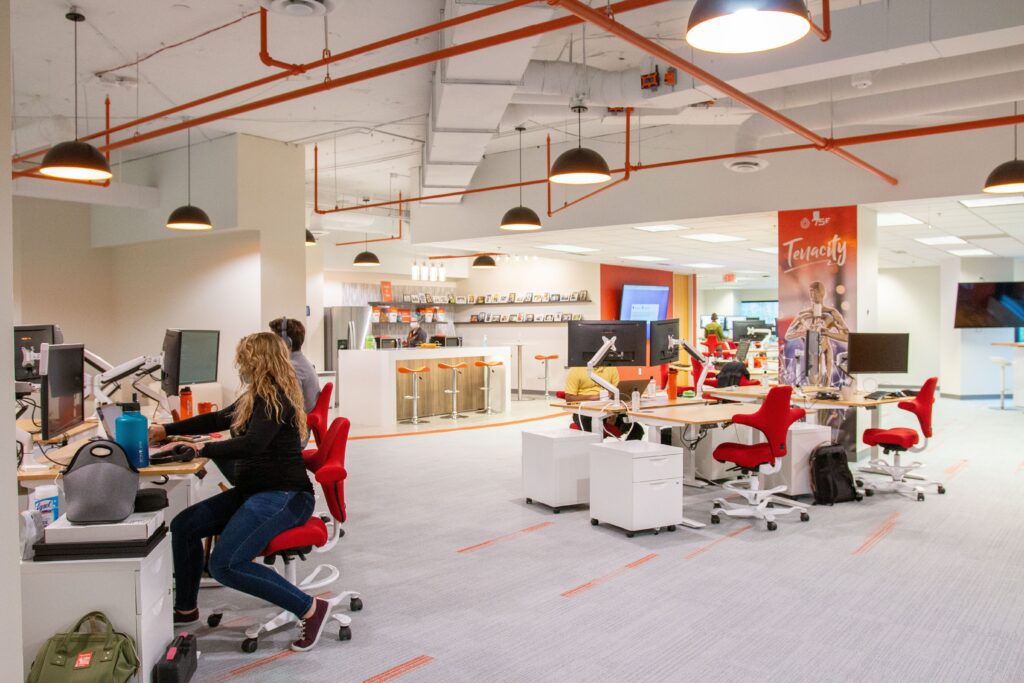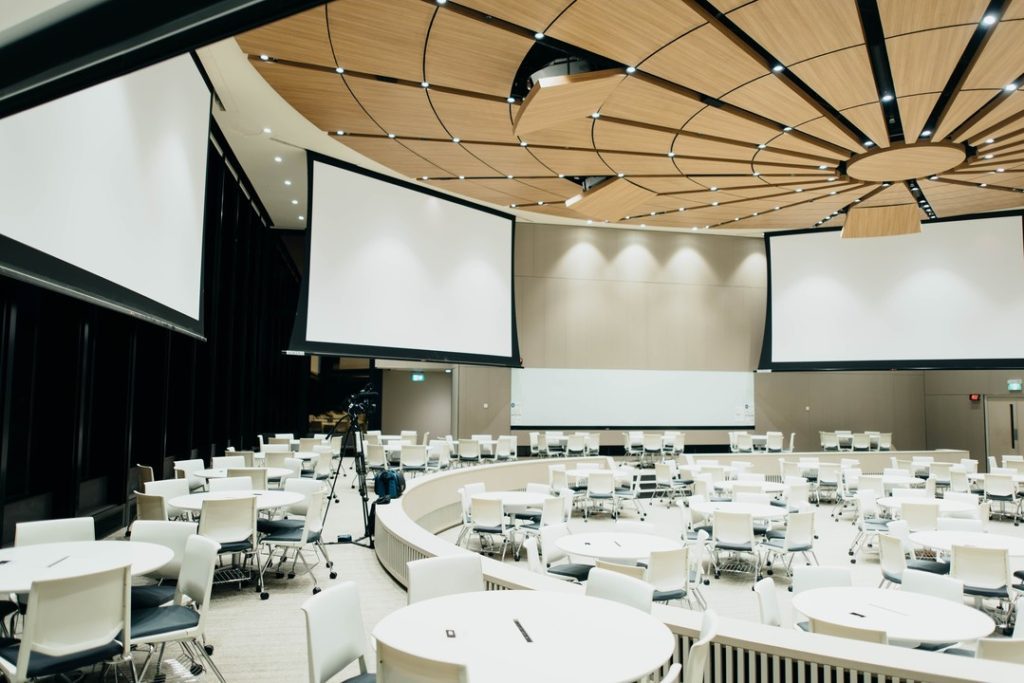In this kickoff to our “Office Breakdown” series, we will explore the different spaces of a large corporate office to analyze their strengths and weaknesses from an AV standpoint.
Open floor plans seem like an attractive option – until someone tries to make a call, start a video conference, or even have a discussion with a coworker. In this series, AV-Tech will explore some of the ways that proper planning and coordination can help improve functionality and ease of use in these large, expansive spaces.
Imagine yourself in an open floor-plan office. Seated at a table to work, you find yourself distracted – by the sounds of coworkers on a coffee break, by the conversation of a small group meeting just a few tables away, by the phone call drifting into the room from someone’s office around the corner. Now imagine having to answer an audio or video conference call, only to realize you don’t have your headphones with you. Sound familiar?
While open floor plan offices can be beneficial to hoteling and company culture, constant distractions & loud noises can be detrimental to productivity. Whether you’re planning a new office layout or retrofitting your current space, acoustics must be taken into consideration from the ground-level design work and onwards. Here are a few things you can do to improve office acoustics:
Add Noise
It seems counterintuitive but adding sound masking to a large space can actually reduce sound pollution. An open floor plan office that lacks ambient sound masking or background music will seem oddly quiet – and consequently, even the smallest cough or quiet conversation can feel disruptive. A sound masking system, or series of speakers installed in ceilings, emits ambient noise like that made by your building’s air conditioning system. This constant and low-level noise is not noticeable enough to be distracting but creates an auditory backdrop that masks other sounds.
Create Quiet Spaces
One of the most important elements of an office designed for a hybrid workforce is the presence of small, private spaces that can be used for calls or concentration. From single occupancy “phone booths” to alcoves meant for small group meetings, your office should offer several options for meetings of all sizes. Ideally, at least some of these should be fitted with AV technology, that optimizes their usefulness by allowing ideation or collaboration around an installed display.
Look to the Ceiling
Large, wide-open office spaces can sometimes feel like an echo chamber, especially in spaces that lack carpeting or other soft materials that absorb sound. In these areas, controlling sound is a must. For those who would like to control sound distribution without sacrificing the look of their open floor plan, the solution is right above your head: an acoustical ceiling captures sounds that would otherwise reverberate throughout the room. In these situations, an acoustical ceiling spray is a great solution that can be applied during construction. This will assist in creating a more acoustically pleasing space to work in, while also being aesthetically pleasing.
Whether you already have an open floor plan or want to update your office layout, bringing in an AV technology professional from the planning phase onwards will allow you to circumvent many of the common problems that plague large, wide-open office spaces. Curious to learn more? Keep an eye out for the next blog in our Office Breakdown series: building a modern break room.



